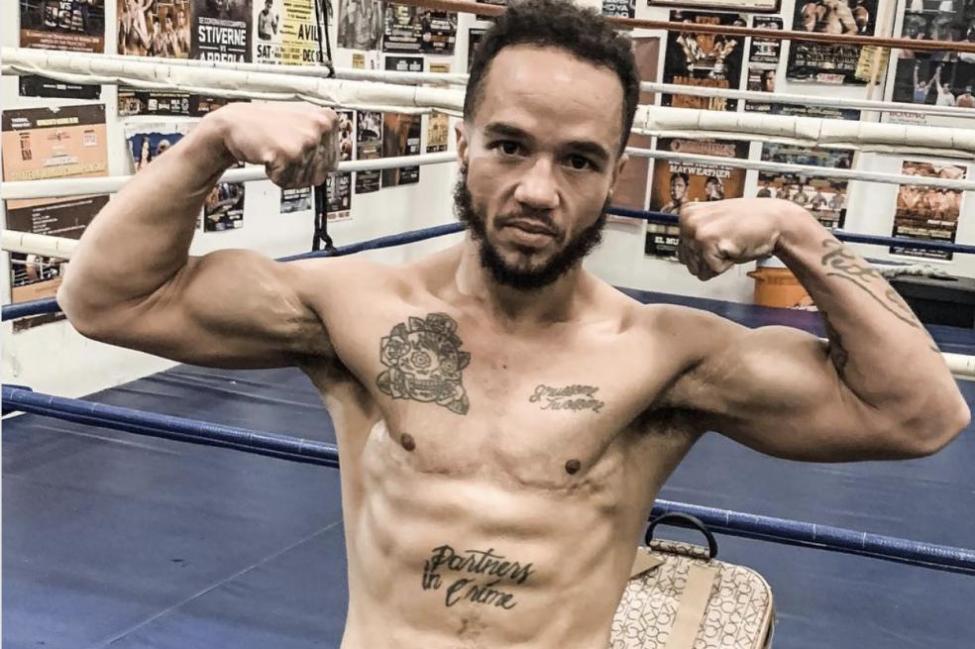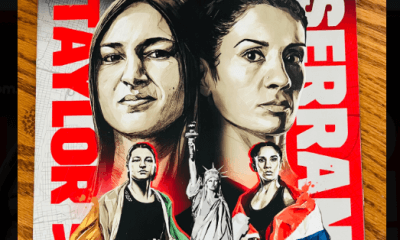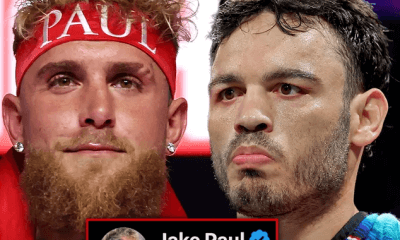Featured Articles
Transgender Boxer Patricio Manuel Breaks New Ground at Fantasy Springs

The continuing encroachment of something known as “political correctness” in American and global society sometimes comes as a jolt to stodgy traditionalists, like me. I just had to shake my head, incredulous, at a news report from 2014 I only recently came across that hinted at the radical changes that, for better or worse, are becoming more and more commonplace.
Four years ago the administrators who run the school system in Lincoln, Neb., launched a campaign to make their classrooms more “gender-inclusive,” meaning teachers could no longer refer to boys and girls as, well, boys and girls. “We have kids who come to us with a whole variety of circumstances, and we need to equitably serve all kids,” Brenda Leggiardo, the district’s coordinator of social workers and counselors, told the Lincoln Journal Star. So instead of asking boys and girls to line up as boys and girls, teachers were encouraged to segregate the children by whether they prefer skateboards or bikes, or whether they like milk or juice. The memo also suggested that all transgender students be referred to as “purple penguins,” presumably without regard for their preferences regarding liquid nourishment at lunchtime.
The Charlotte-Mecklenburg school district in North Carolina later adopted similar “gender-inclusive” guidelines, which caused me to wonder when this small snowball rolling downhill would become an avalanche, and when a portion of the PC-orchestrated new world order would branch off into the sports world. And then it occurred to me: it already has.
The latest example of athletic gender-bending came on Dec. 8 at the Fantasy Springs Resort Casino in Indio, Calif., when Patricio Manuel, a 33-year-old transgender male who had fought in the 2012 U.S. Olympic Trials as a woman, scored a four-round unanimous decision over Mexican super featherweight Hugo Aguilar. It was the first sanctioned professional boxing match involving a transgender participant, and Manuel (pictured) vowed it won’t be the last.
“I wouldn’t trade any of it. It was worth everything I went through to get to this point,” Manuel, who underwent complex medical treatments, including surgery and hormone therapy, told the Los Angeles Times. “I’m a professional boxer now.
“I’ve got some naysayers out there – I need to prove that I deserve to be in there as well. I’m not in here for one show, one fight – this is something I love. I’m not done with this sport and I’ll be back.”
Well, maybe. But much will depend on the willingness of male-from-birth fighters in the “Me, Too” era –in which men who physically abuse women, or use positions of authority to take advantage of them sexually, are rightly chastised — to be paired with Manuel. Some men will reasonably believe that, if they defeat Manuel, and particularly by knockout, they would be criticized for beating up someone who used to be a woman. It is possible, and perhaps likely, that such criticism would arise; an online search I conducted produced a video of a female soldier in the U.S. Army who had bragged that she could whip any male Marine stationed at their joint base in a boxing match. Such a fight was arranged (it can be seen on YouTube) and the Marine pummeled the lady soldier from pillar to post in the first round, whereupon he was booed unmercifully, even by his fellow Marines.
I covered the flip side of such a transgender role reversal in the 1970s, when I authored a feature story on the opposition encountered by tennis player Renee Richards after her sex-reassignment surgery. Formerly known as Richard Raskind, in his earlier incarnation he was an excellent athlete, lettering in tennis, football, baseball and swimming in high school before going on to Yale, where he was captain of the men’s tennis team. In the 1970s, however, Raskind came to the realization that he had long felt more female than male and began the process of transition. The transformation complete, the renamed Renee Richards competed as a woman in the 1976 U.S. Open, and shortly thereafter the United States Tennis Association, in apparent reaction to her arrival on the scene, began requiring genetic screening for female players. Richards challenged that policy and the New York Supreme Court ruled in her favor, a landmark case in transgender rights.
But her victory in the courts was not so warmly received by many women on the court, who complained that the 6-foot-1 Richards, despite being in her early 40s, had physical advantages, such as a booming lefthanded serve, that blurred the line between who she had been as a man and who she had become through the auspices of modern medicine.
The most famous male vs. female matchup, one that drew 30,000-plus on-site spectators to the Astrodome in Houston and a huge nationwide television audience on Sept. 21, 1973, pitted 55-year-old former Wimbledon champion Bobby Riggs against Billie Jean King, 29, arguably the top woman player of her era and an unabashed proponent of the feminist movement. The “Battle of the Sexes” was spurred by Riggs’ 6-2, 6-1 victory over another standout female player, Margaret Court, and his constant chirping that, even at his advanced age, the chatty chauvinist could take down any of the sport’s top women. King accepted the challenge and struck a blow for her cause with 6-4, 6-3, 6-3 victory. She accepted the $100,000 winner’s check from, interestingly, smiling heavyweight champion George Foreman.
King’s coronation eventually helped bring about parity with the men in purse money at major tournaments, which was significant, but what, really, had it proved? Was it merely an evening of the score for Riggs having embarrassed Court? That a great woman player in her prime could beat the shorts off a geezer of a guy who had not played competitive tournament tennis in 22 years?
With apologies to William Shakespeare, another male vs. female pairing that was full of sound and fury, signifying nothing, took place on Oct. 10, 1999, in Mercer Arena in Seattle, Wash., when boxer Margaret McGregor scored a four-round unanimous decision over fill-in opponent Loi Chow, a jockey by trade who was 0-2 in pro bouts, the most recent coming three years earlier. The then-36-year-old McGregor, who had an extensive kickboxing and boxing background and was 3-0 in pro boxing matches against women, towered over Chow and dominated him from the outset. Snarky commentators regarded the fight as a farce, maybe more than they might have had not McGregor’s originally scheduled and more talented opponent, Hector Morales, dropped out.
There has not been a sanctioned boxing match between a man and a woman since, and, hopefully, there never will be another, not in an era when statistics indicate that every nine seconds a woman is facing domestic battery in America.
There is, admittedly, a curiosity element attached to these events. I was at Caesars Palace in Las Vegas on Sept. 25, 1992, for an exhibition match pitting 40-year-old tennis great Jimmy Connors against a female counterpart, 35-year-old Martina Navratilova, in what was billed as “Battle of the Sexes II.” Rules aimed at leveling the playing field limited Connors to one serve and obliging him to cover half of each the doubles alleys, four additional feet in all. Despite those handicaps, Connors won, 7-5, 6-2, before a sellout crowd of 13,832 and a national pay-per-view TV audience.
Strangely enough, I have been portrayed as being on both sides of the philosophical divide concerning male/female issues. I strongly support the notion of equal pay for equal work for both genders, and I endorsed the creation of the Christy Martin Award that goes to the Female Fighter of the Year, which was presented by the Boxing Writers Association of America for the first time earlier this year to Cecilia Braekhus in New York. To one regular poster to the TSS site, who apparently is of the opinion that women are only good for baking cookies and bearing children, those positions stamped me as some sort of non-macho pansy. But I also oppose the notion of military women as combat troops, which some would say makes me as much of a hairy-knuckled Neanderthal as the now-deceased Riggs.
As the son of a wonderful mother, husband of a terrific wife, and father of two great daughters, I have always believed that anyone regardless of sexual orientation can achieve as much as their talent and ambition will take them. But whether the deep thinkers on the school boards in Lincoln and Charlotte care to admit it or not, there are some gaps, in an athletic sense, that political correctness cannot bridge. It is patently ridiculous to allow boys to compete in girls’ interscholastic sports because their schools don’t field boys’ volleyball, field hockey or softball teams. Size, strength and testosterone almost always give the guys a winning edge in those instances.
Boxing, more so than in other sports, represents a Grand Canyonesque chasm of separation. Claressa Shields is a two-time Olympic gold medalist, but no one expects her to swap punches with Canelo Alvarez or Gennady Golovkin now or ever. Braekus is undefeated and the undisputed women’s welterweight champion, but there is no groundswell to put her in the ring against Terence Crawford or Errol Spence Jr.
We should enjoy our sporting heroes, and heroines, for who and what they are. Let boys be boys and girls be girls and transgenders whatever the heck they choose to be. And a Merry Christmas to all, and to all a good night.
Bernard Fernandez is the retired boxing writer for the Philadelphia Daily News. He is a five-term former president of the Boxing Writers Association of America, an inductee into the Pennsylvania, New Jersey and Atlantic City Boxing Halls of Fame and the recipient of the Nat Fleischer Award for Excellence in Boxing Journalism and the Barney Nagler Award for Long and Meritorious Service to Boxing.
Check out more boxing news on video at The Boxing Channel
To comment on this article in the Fight Forum, CLICK HERE
-

 Featured Articles4 weeks ago
Featured Articles4 weeks agoAvila Perspective, Chap. 330: Matchroom in New York plus the Latest on Canelo-Crawford
-

 Featured Articles3 weeks ago
Featured Articles3 weeks agoVito Mielnicki Jr Whitewashes Kamil Gardzielik Before the Home Folks in Newark
-

 Featured Articles22 hours ago
Featured Articles22 hours agoResults and Recaps from New York Where Taylor Edged Serrano Once Again
-

 Featured Articles4 weeks ago
Featured Articles4 weeks agoCatching Up with Clay Moyle Who Talks About His Massive Collection of Boxing Books
-

 Featured Articles5 days ago
Featured Articles5 days agoFrom a Sympathetic Figure to a Pariah: The Travails of Julio Cesar Chavez Jr
-

 Featured Articles3 weeks ago
Featured Articles3 weeks agoMore Medals for Hawaii’s Patricio Family at the USA Boxing Summer Festival
-

 Featured Articles1 week ago
Featured Articles1 week agoCatterall vs Eubank Ends Prematurely; Catterall Wins a Technical Decision
-

 Featured Articles4 weeks ago
Featured Articles4 weeks agoRichardson Hitchins Batters and Stops George Kambosos at Madison Square Garden




















